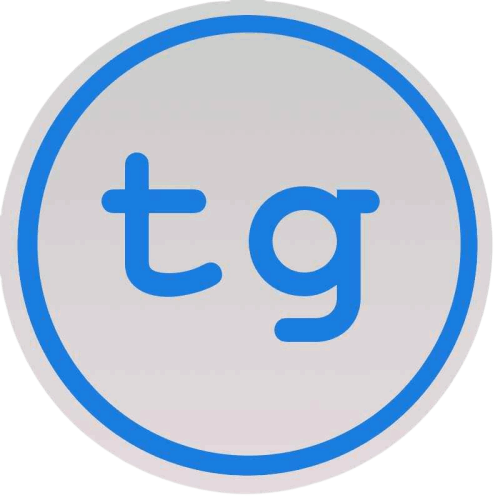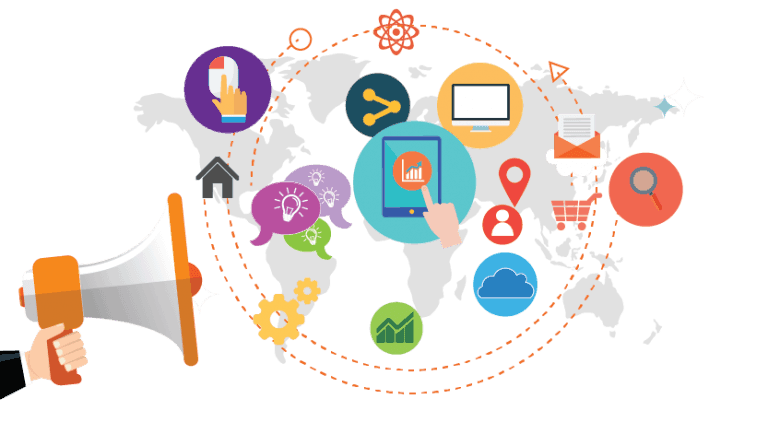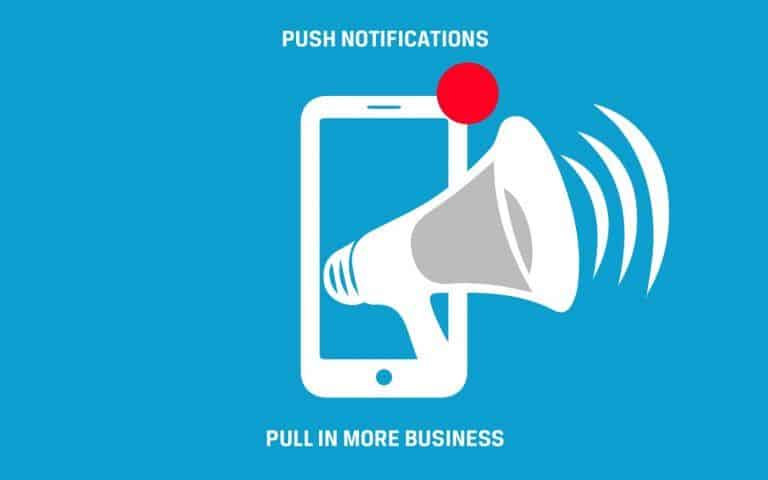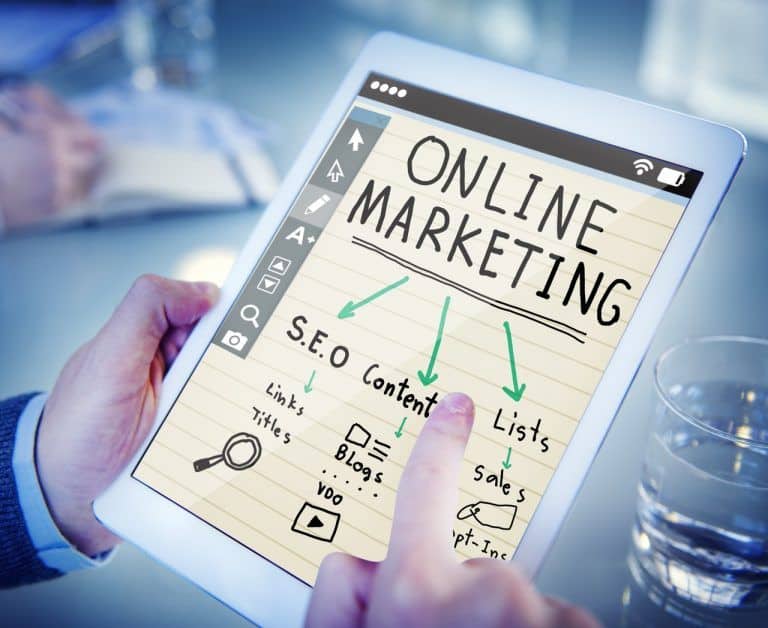10 Best Digital Marketing Strategies to Dominate in 2025
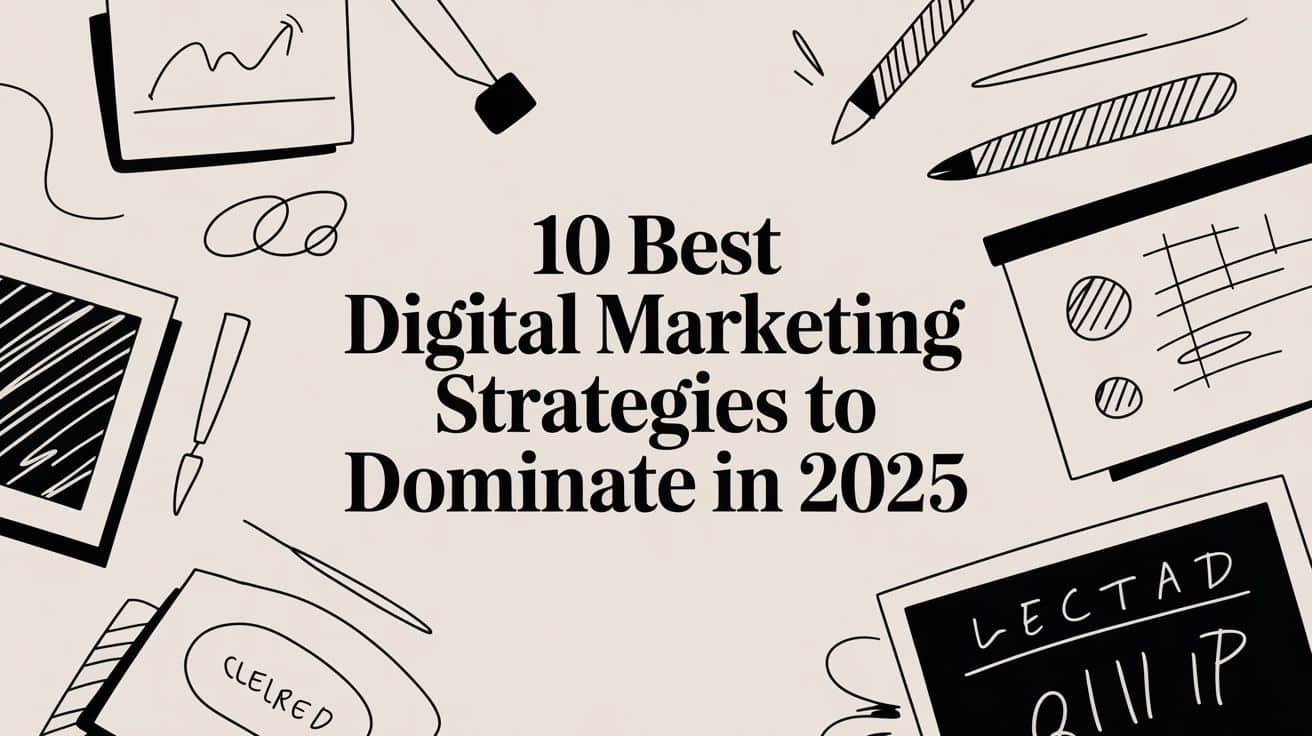
Navigating the crowded digital marketplace requires more than just a presence; it demands a precise, multi-faceted plan. The challenge isn't a lack of options, but rather identifying which channels and tactics will deliver tangible results for your specific goals. This guide cuts through the noise to provide a comprehensive roadmap, focusing on the best digital marketing strategies that consistently drive growth, engagement, and conversions. We move beyond surface-level definitions to give you a blueprint for execution.
This is not another generic list of buzzwords. Instead, you will find a detailed breakdown of ten powerful strategies, each presented with actionable steps, practical examples, and expert insights. We will explore how to build a robust content engine, master the technical nuances of SEO, and launch targeted social media campaigns that resonate with your audience. You will learn the mechanics behind high-performing email sequences, pay-per-click advertising, influencer collaborations, and video marketing.
Furthermore, we will delve into the critical, often-overlooked components that tie everything together: marketing automation to scale your efforts, conversion rate optimization (CRO) to maximize your existing traffic, and retargeting to re-engage valuable prospects. Each section is designed to be a standalone guide, yet they work together to form a cohesive and powerful marketing ecosystem. Whether you are a startup founder, a seasoned marketer, or a business owner looking to refine your approach, this article provides the clarity and strategic direction needed to build a successful digital presence and achieve your objectives.
1. Strategy #1: Content Marketing – The Foundation of Modern Engagement
Content marketing is a strategic approach that moves beyond direct sales pitches to attract, engage, and retain a specific audience. It involves creating and distributing valuable, relevant, and consistent content designed to solve your audience's problems and build lasting relationships. This foundational practice fuels other channels, providing the high-quality assets needed for successful SEO, social media engagement, and email campaigns.
How It Works and Why It’s a Top Strategy
Instead of interrupting potential customers with traditional ads, content marketing pulls them in by providing genuine utility. A business that sells project management software, for instance, might create a blog series on "Boosting Team Productivity" or a free downloadable guide to "Managing Remote Teams Effectively." This approach establishes the brand as a credible authority and builds trust, making customers more likely to choose them when they are ready to buy.
This is one of the best digital marketing strategies because it creates long-term, sustainable assets. Unlike a paid ad that stops delivering results the moment you stop paying, a high-quality blog post or video can attract organic traffic and generate leads for years.
Key Data Points for Content Marketing
The data clearly shows why content marketing is a non-negotiable part of modern marketing. Here is a quick reference summarizing its impact on lead generation and cost-efficiency compared to traditional outbound methods.
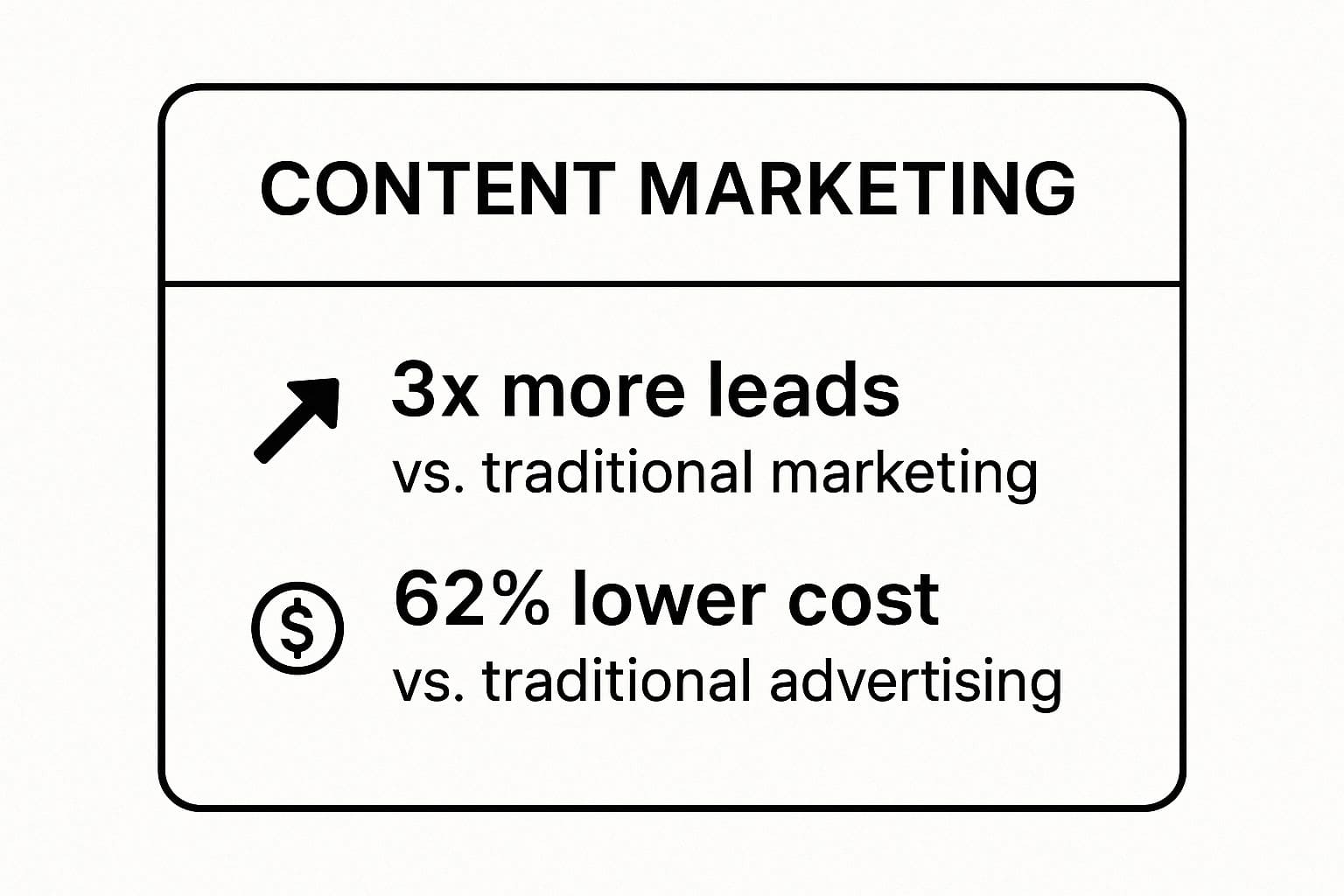
These metrics highlight that content marketing is not only more effective at generating interest but also significantly more budget-friendly, delivering a superior return on investment.
Actionable Tips for Implementation
- Develop a Documented Strategy: Align your content plan with specific business goals. Define your target audience, core topics (content pillars), and key performance indicators (KPIs).
- Focus on Quality Over Quantity: One exceptional, in-depth article that perfectly matches search intent will outperform ten mediocre ones. Prioritize value and thoroughness.
- Repurpose Content: Maximize your efforts by turning a single blog post into an infographic, a video script, a social media series, and an email newsletter.
2. Search Engine Optimization (SEO) – Attracting High-Intent Traffic
Search Engine Optimization (SEO) is the practice of increasing the quantity and quality of traffic to your website through organic search engine results. It involves optimizing your website’s content, technical setup, and authority so that search engines like Google see it as a valuable and relevant answer to users' search queries. A well-executed SEO strategy ensures your business appears prominently when potential customers are actively looking for your products or services.
How It Works and Why It’s a Top Strategy
SEO works by signaling to search engines that your content is the best result for a specific search query. This is achieved through on-page SEO (optimizing content and HTML), off-page SEO (building backlinks and authority), and technical SEO (ensuring your site is crawlable and fast). For example, a company like NerdWallet creates in-depth financial comparison content that directly answers high-value questions, helping it rank for competitive keywords and attract users actively seeking financial advice.
This is one of the best digital marketing strategies because it targets users with high purchase intent. Unlike other forms of marketing that interrupt an audience, SEO connects you with people who are already searching for a solution you provide. The organic traffic it generates is not only highly qualified but also sustainable, delivering long-term value without ongoing ad spend.
Actionable Tips for Implementation
- Focus on E-E-A-T: Google prioritizes content demonstrating Experience, Expertise, Authoritativeness, and Trustworthiness. Showcase your credentials, cite reputable sources, and create content that proves your authority.
- Target User Intent: Move beyond simply stuffing keywords. Understand what the user is truly trying to accomplish with their search and create content that comprehensively solves their problem.
- Optimize Technical Health: Ensure your website is mobile-friendly, loads quickly, and is secure (HTTPS). Use tools like Google Search Console to monitor Core Web Vitals and fix technical errors that hinder performance.
- Build Quality Backlinks: Earn links from reputable websites in your niche. This can be achieved by creating link-worthy content, guest blogging, and building genuine industry relationships.
3. Social Media Marketing – Building Communities and Driving Conversations
Social media marketing is the strategic use of platforms like Instagram, TikTok, Facebook, and LinkedIn to connect with your audience, build brand identity, and drive business goals. This approach moves beyond simply posting updates; it's about creating a vibrant community, fostering genuine engagement, and participating in relevant cultural conversations. When done right, it transforms followers into loyal brand advocates.

How It Works and Why It’s a Top Strategy
Instead of waiting for customers to find them, brands use social media to meet audiences where they already spend their time. For example, a brand like Duolingo uses quirky, meme-focused content on TikTok to make language learning feel fun and relatable, generating massive organic reach. Similarly, Wendy's witty and humorous Twitter presence has become a brand-defining characteristic, earning it widespread media attention and customer loyalty.
Social media is one of the best digital marketing strategies because it offers a direct line of communication with customers. It provides instant feedback, allows for real-time customer service, and humanizes your brand. This direct engagement builds a level of trust and authenticity that is difficult to replicate through other channels, making it a powerful tool for both brand building and driving sales.
Key Data Points for Social Media Marketing
The numbers confirm the immense influence of social media on consumer behavior. An overwhelming majority of users discover new products on these platforms, and a significant portion make purchases directly through social channels. This data underscores its role as a critical touchpoint in the modern customer journey.
A study by Sprout Social found that 80% of consumers expect brands to interact with them on social media. Furthermore, a report from The Harris Poll shows that 78% of consumers are willing to buy from a company after having a positive experience with them on social. These statistics highlight the direct link between social engagement and revenue.
These metrics prove that a strong social presence is no longer optional; it's a core expectation that directly impacts customer acquisition and retention.
Actionable Tips for Implementation
- Choose Platforms Wisely: Don't try to be everywhere. Focus your efforts on the one or two platforms where your target audience is most active and engaged.
- Create Platform-Native Content: Tailor your content to each platform's unique format and culture. What works on LinkedIn (professional articles) will not work on TikTok (short, entertaining videos).
- Engage Authentically: Respond to comments, answer messages, and participate in conversations. Authentic, two-way communication is key to building a loyal community. To get started, learn more about how to create a social media content strategy on techgeekers.com.
4. Email Marketing – The Direct Line to Your Audience
Email marketing is a powerful and direct digital communication channel used to nurture leads, convert prospects, and retain existing customers. It involves sending targeted, commercial messages to a list of subscribers who have explicitly opted in to receive them. Despite its long history, email marketing consistently delivers one of the highest returns on investment (ROI) of all digital marketing strategies by building direct, personal relationships in the one place people check every day: their inbox.
How It Works and Why It’s a Top Strategy
Instead of waiting for customers to find you, email marketing lets you proactively reach out with personalized content, promotions, and updates. A prime example is an e-commerce store sending an abandoned cart email with a small discount to entice a user back, or a SaaS company sending a weekly newsletter with tips and case studies to keep users engaged. This direct access builds loyalty and drives repeat business in a way that public-facing channels cannot.
This is one of the best digital marketing strategies because you own your audience. Unlike social media, where algorithm changes can tank your reach overnight, your email list is a stable asset that provides a reliable way to communicate with interested prospects. It’s perfect for moving leads through every stage of the sales funnel, from initial awareness to final conversion and long-term advocacy.
Actionable Tips for Implementation
- Build Your List Organically: Offer a valuable incentive, like a free ebook, a webinar, or a discount code, in exchange for an email address. Never buy email lists.
- Segment for Relevance: Group your subscribers based on behavior, demographics, or purchase history to send highly targeted and effective messages that resonate with each segment.
- Optimize for Mobile: With over half of all emails opened on mobile devices, ensure your design is responsive, your copy is concise, and your call-to-action is easy to tap.
- Craft Compelling Subject Lines: Keep subject lines under 50 characters to avoid being cut off on mobile devices. Use curiosity, urgency, or personalization to encourage high open rates.
- Automate Nurture Sequences: Set up automated email workflows (drip campaigns) to welcome new subscribers, follow up on purchases, and re-engage inactive contacts. For a deeper dive, you can learn more about how to troubleshoot your email marketing server on techgeekers.com.
5. Pay-Per-Click Advertising (PPC) – Driving Instant, Targeted Traffic
Pay-Per-Click (PPC) is a digital advertising model where businesses pay a fee each time one of their ads is clicked. Instead of earning visits organically through SEO, PPC allows you to buy targeted visits to your site. The most common form is search engine advertising (e.g., Google Ads), where advertisers bid on keywords relevant to their target audience's search queries.
How It Works and Why It’s a Top Strategy
PPC provides immediate visibility and control, making it one of the best digital marketing strategies for generating quick results. For example, a new e-commerce store selling hiking gear can instantly appear at the top of Google for searches like "best waterproof hiking boots" by bidding on that keyword. This strategy places your brand directly in front of motivated buyers at the exact moment they are searching for a solution.
Unlike organic strategies that take time to build momentum, PPC campaigns can drive traffic and conversions from day one. This makes it invaluable for product launches, seasonal promotions, or testing new market messaging. The ability to precisely target demographics, interests, and user behavior ensures your ad spend is directed toward the most qualified audience, maximizing return on investment.
Key Data Points for PPC Advertising
The data underscores PPC's effectiveness in reaching purchase-ready consumers. When compared to organic clicks, the intent behind a click on a paid ad is often much higher, leading to better conversion rates for bottom-of-funnel keywords.
These statistics confirm that PPC is a powerful tool for capturing high-intent traffic and driving direct revenue, complementing the long-term efforts of organic marketing.
Actionable Tips for Implementation
- Focus on High-Intent Keywords: Target long-tail keywords (e.g., "buy leather messenger bag for men") that indicate a user is close to making a purchase.
- Create Dedicated Landing Pages: Ensure your ad's messaging perfectly matches the landing page content to increase your Quality Score and improve conversion rates.
- Use Negative Keywords: Actively build a list of negative keywords to prevent your ads from showing for irrelevant searches, which saves your budget for qualified clicks.
- Utilize Ad Extensions: Enhance your ads with sitelinks, callouts, and location extensions to take up more space on the results page and provide more reasons for users to click.
6. Influencer Marketing – Leveraging Authentic Voices for Brand Trust
Influencer marketing is a strategy that leverages individuals with established credibility and a significant social media following to promote products or services. It moves beyond brand-created advertising to tap into the authentic relationship and trust that creators have built with their audience. This approach can range from collaborations with mega-celebrities to partnerships with hyper-niche micro-influencers, making recommendations feel more like trusted peer suggestions than direct advertisements.
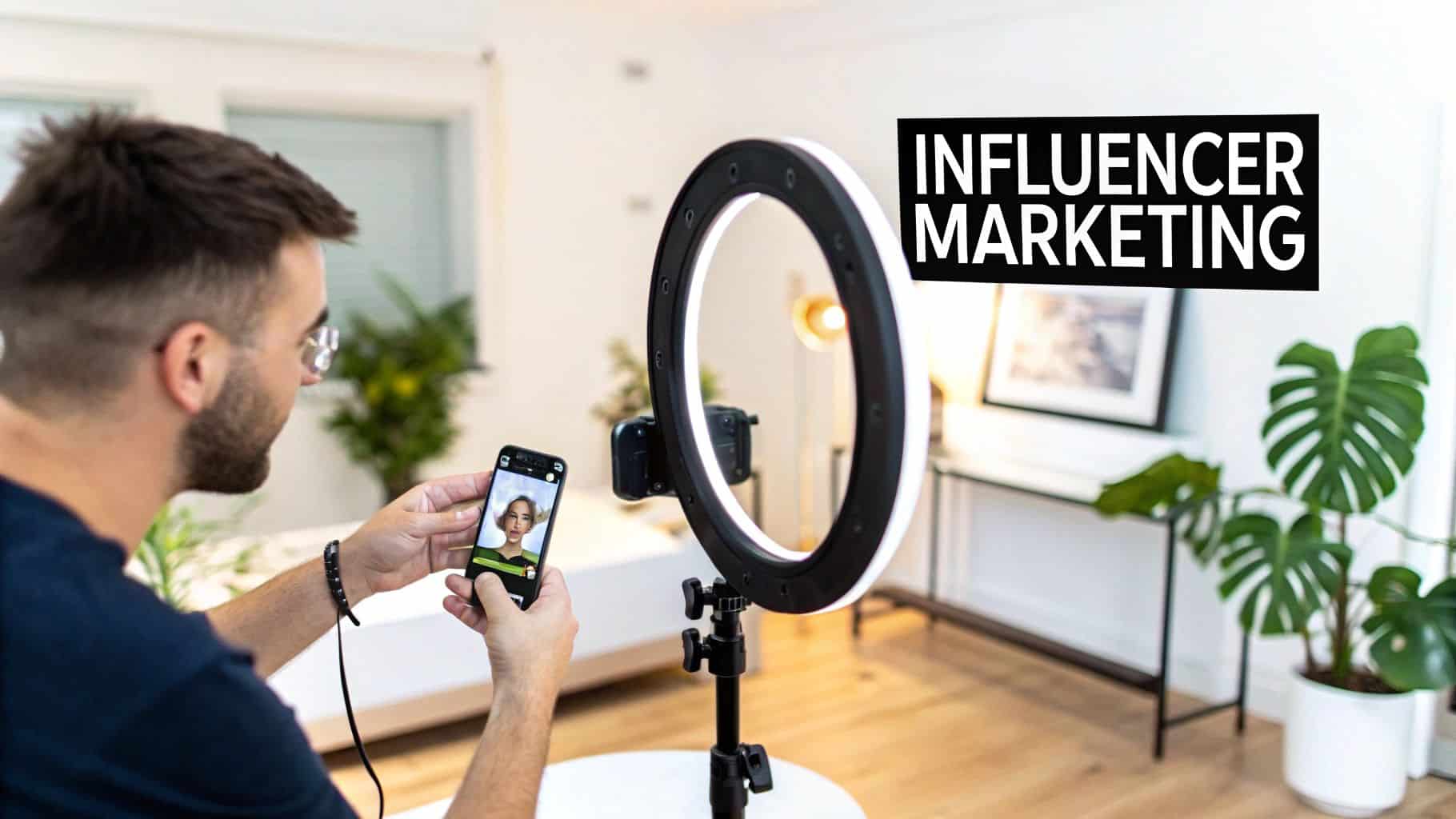
How It Works and Why It’s a Top Strategy
Instead of broadcasting a message to a wide audience, influencer marketing targets specific communities through a voice they already follow and respect. For example, a sustainable fashion brand might partner with an eco-conscious lifestyle blogger to showcase its new collection. The influencer’s genuine endorsement exposes the brand to a highly relevant and engaged audience, driving both awareness and sales through authentic storytelling.
This method is one of the best digital marketing strategies because it excels at cutting through the noise of traditional ads. Consumers are increasingly skeptical of corporate messaging, but they trust recommendations from people they follow. This borrowed trust allows brands to build credibility and connect with potential customers on a more personal level, leading to higher engagement and conversion rates.
Actionable Tips for Implementation
- Prioritize Engagement Over Followers: A smaller, highly engaged audience is often more valuable than a large, passive one. Look for influencers with strong comment sections and high like-to-follower ratios.
- Align on Values and Authenticity: Choose partners whose personal brand and audience demographics align perfectly with your own. An authentic match is crucial for a believable and effective campaign.
- Utilize Micro-Influencers for ROI: Influencers with 10,000 to 100,000 followers often have better engagement rates and are more cost-effective. They can deliver a strong return on investment, especially for niche products.
- Track Performance with Unique Codes: Provide influencers with unique discount codes or trackable links (UTM parameters) to accurately measure the traffic, leads, and sales generated from each partnership.
- Ensure FTC Compliance: Always adhere to legal guidelines by ensuring influencers clearly disclose their paid partnership with your brand using hashtags like #ad or #sponsored.
7. Video Marketing – Capturing Attention in a Visual World
Video marketing is the strategic use of video to promote a brand, educate consumers, and drive engagement across digital platforms. It goes far beyond simple advertisements, encompassing everything from short-form social media clips on TikTok and Instagram Reels to in-depth YouTube tutorials, live webinars, and customer testimonials. As video continues to dominate internet traffic, it has become an essential medium for cutting through the noise and connecting with audiences on a more human level.

How It Works and Why It’s a Top Strategy
Video marketing works by leveraging the power of sight and sound to tell compelling stories and convey complex information quickly and effectively. A brand like Blendtec, for example, used its viral "Will It Blend?" series to showcase its blender's power in an entertaining way, turning a functional product into a pop culture phenomenon. This approach builds an emotional connection that static text or images often cannot match.
It stands out as one of the best digital marketing strategies because of its versatility and high engagement rates. Video can be adapted for every stage of the customer journey, from building top-of-funnel awareness with viral content to providing bottom-of-funnel product demos that drive conversions. Moreover, video content is highly shareable, increasing its potential for organic reach and brand amplification.
Actionable Tips for Implementation
- Hook Viewers Immediately: The first 3 to 5 seconds are critical. Start with a compelling question, a surprising statement, or dynamic visuals to capture attention before they scroll away.
- Optimize for Silent Viewing: A large percentage of social media videos are watched without sound. Use on-screen text overlays and clear, descriptive captions to ensure your message is understood.
- Prioritize High-Quality Audio: Viewers will forgive mediocre video quality, but poor audio is an instant turn-off. Invest in a decent microphone to ensure your message is clear and professional.
- Include a Clear Call-to-Action (CTA): End every video by telling your audience what to do next. Whether it's "subscribe," "visit our website," or "download our guide," a clear CTA guides viewers toward the desired action.
8. Strategy #8: Marketing Automation – Scaling Personalization and Efficiency
Marketing automation involves using software to automate repetitive marketing tasks, such as email marketing, social media posting, and ad campaigns. More than just a time-saver, this technology enables businesses to deliver highly personalized and timely experiences to their audience at a scale that would be impossible to manage manually. It is the engine that powers modern lead nurturing, customer retention, and data-driven marketing decisions.
How It Works and Why It’s a Top Strategy
Instead of manually sending follow-up emails or segmenting lead lists, marketing automation platforms handle these tasks based on predefined rules or "workflows." For example, if a user downloads an ebook from your website, the system can automatically add them to a specific email nurture sequence. This sequence delivers a series of relevant, educational emails over several weeks to guide them through the sales funnel without any direct intervention from your team.
This is one of the best digital marketing strategies because it ensures no lead falls through the cracks and that every customer receives communication relevant to their specific actions and interests. Platforms like HubSpot, ActiveCampaign, and Salesforce Pardot combine CRM, email, and analytics, allowing businesses to score leads based on their engagement, prioritize sales efforts, and measure campaign effectiveness with precision. This leads to higher conversion rates, improved efficiency, and a more cohesive customer journey.
Actionable Tips for Implementation
- Start Simple and Scale: Begin with a basic workflow, like a welcome email series for new subscribers. Gradually add complexity as you become more comfortable with the platform and understand your audience's behavior.
- Map the Customer Journey First: Before building any automation, outline the key stages your customers go through. This map will serve as the blueprint for creating effective and relevant communication sequences.
- Implement Lead Scoring: Assign points to leads based on their demographics and actions (e.g., visiting a pricing page). This helps your sales team prioritize follow-ups with the most engaged and qualified prospects.
- Maintain a Human Touch: Use personalization tokens beyond just the contact's first name. Reference their past purchases, website activity, or interests to make automated messages feel personal and genuine.
9. Conversion Rate Optimization (CRO) – Maximizing Value from Your Existing Traffic
Conversion Rate Optimization (CRO) is a systematic process focused on increasing the percentage of website visitors who take a desired action. This action, or "conversion," could be anything from making a purchase to filling out a form or signing up for a newsletter. Instead of chasing more traffic, CRO aims to get more value from the visitors you already have, making it one of the most cost-effective digital marketing strategies available.
How It Works and Why It’s a Top Strategy
CRO leverages data analysis, user feedback, and A/B testing to identify friction points in the user journey and systematically remove them. For example, by analyzing user behavior, a business might discover that a complicated checkout process is causing a high cart abandonment rate. They could then hypothesize that simplifying the form will increase completions, test this change, and measure the results.
This strategy is powerful because it directly impacts your bottom line and improves user experience simultaneously. A higher conversion rate means more leads and sales from the same marketing spend, leading to a much higher ROI. Famously, Barack Obama's 2008 campaign raised an additional $60 million by A/B testing different landing page designs and calls to action. This shows how small, data-driven changes can yield massive results.
Key Data Points for Conversion Rate Optimization (CRO)
The data surrounding CRO underscores its critical importance. Even minor improvements in conversion rates can lead to substantial revenue growth, highlighting its role as a key lever for profitability.
“The average eCommerce conversion rate hovers around 2-3%. By using CRO principles to move that to 4%, a business can effectively double its revenue without spending a single extra dollar on acquiring new traffic.”
This statistic reveals why CRO is one of the best digital marketing strategies: it directly enhances the efficiency and profitability of all your other traffic-driving efforts, from SEO to paid advertising.
Actionable Tips for Implementation
- Prioritize High-Impact Pages: Start optimizing pages with high traffic but low conversion rates, like your homepage, pricing pages, or key landing pages, for the quickest wins.
- Combine Quantitative and Qualitative Data: Use analytics to see what users are doing, then use surveys, heatmaps, and user testing to understand why they are doing it.
- Form a Clear Hypothesis: Every test should be based on a clear hypothesis, such as "Changing the CTA button color from blue to orange will increase clicks because it stands out more."
- Test One Variable at a Time: To get clean, actionable data, isolate a single element to test, whether it's a headline, an image, or a form field.
- Simplify and Reduce Friction: Remove unnecessary form fields, simplify navigation, and ensure your calls to action are clear and compelling. For more ideas, you can learn more about strategies for increasing your lead conversion rate on techgeekers.com.
10. Strategy #10: Retargeting/Remarketing – Re-engaging Your Warmest Prospects
Retargeting, also known as remarketing, is a powerful advertising strategy designed to reconnect with users who have previously visited your website or interacted with your brand but did not convert. By using tracking technologies like pixels and cookies, this method displays targeted ads to these warm prospects as they browse other websites, scroll through social media, or use search engines. It's a highly efficient way to stay top-of-mind and guide interested users back to complete a purchase, sign-up, or other desired action.
How It Works and Why It’s a Top Strategy
The reality of digital marketing is that the vast majority of first-time visitors leave a website without converting. Retargeting works by tagging these visitors, allowing you to serve them personalized ads later. For example, a user who views a specific pair of shoes on an e-commerce site might see an ad for those exact shoes on their Facebook feed a few hours later. This persistent, gentle reminder significantly increases the likelihood of conversion by capitalizing on existing interest.
This is one of the best digital marketing strategies because it focuses your ad spend on an audience that has already demonstrated interest in your brand, yielding a much higher ROI than targeting cold audiences. It acts as a crucial follow-up mechanism, turning missed opportunities into successful conversions.
Key Data Points for Retargeting/Remarketing
The data behind retargeting underscores its effectiveness in recovering potential customers and boosting conversion rates. Its ability to target users who are already familiar with a brand makes it an incredibly efficient tactic.
These metrics show that by re-engaging a warm audience, you are not just reminding them of your brand; you are actively moving them down the sales funnel with a high probability of success.
Actionable Tips for Implementation
- Segment Your Audiences: Don't treat all visitors the same. Create separate retargeting lists for users who abandoned their cart, viewed specific product pages, or only visited the homepage. Tailor your ad creative and offers accordingly.
- Set Frequency Caps: Avoid ad fatigue and annoying your audience by limiting how many times a user sees your ad. A cap of 3-5 impressions per user per week is a common best practice.
- Use Dynamic Ads: For e-commerce, implement dynamic retargeting that automatically shows users the exact products they previously viewed. This hyper-personalization dramatically increases ad relevance and click-through rates.
- Exclude Converters: Ensure you stop showing ads to users once they have completed the desired action. Wasting ad spend on existing customers and showing them irrelevant ads creates a poor user experience.
Top 10 Digital Marketing Strategies Comparison
| Marketing Strategy | Implementation Complexity 🔄 | Resource Requirements ⚡ | Expected Outcomes 📊 | Ideal Use Cases 💡 | Key Advantages ⭐ |
|---|---|---|---|---|---|
| Content Marketing | Medium to High – Requires consistent quality content 🔄 | Skilled writers, designers, strategists ⚡ | Builds long-term authority; generates qualified leads 📊 | B2B, SaaS, educational platforms, authority building 💡 | Builds trust and SEO; cost-effective; evergreen assets ⭐ |
| Search Engine Optimization (SEO) | High – Technical & ongoing updates 🔄 | SEO expertise, content creators ⚡ | Sustainable organic traffic; high-close rate leads 📊 | All online businesses, e-commerce, local, info sites 💡 | Long-term ROI; high credibility; captures intent ⭐ |
| Social Media Marketing | Medium to High – Platform-specific and continuous 🔄 | Content creators, social managers ⚡ | Brand awareness, engagement, viral potential 📊 | B2C, e-commerce, lifestyle, younger demographics 💡 | Direct interaction; massive reach; cost-effective ⭐ |
| Email Marketing | Medium – List building and segmentation 🔄 | Email tools, copywriters ⚡ | Highest ROI; direct, measurable engagement 📊 | E-commerce, SaaS, B2B, repeat customers 💡 | High ROI; personalized and automated communication ⭐ |
| Pay-Per-Click Advertising (PPC) | Medium to High – Requires expertise and continuous spend 🔄 | Paid budget, ad specialists ⚡ | Immediate traffic; measurable ROI 📊 | E-commerce, local services, urgent campaigns 💡 | Fast results; targeted; budget control ⭐ |
| Influencer Marketing | Medium – Influencer vetting and relationship management 🔄 | Budget for partnerships; influencer vetting ⚡ | Increased brand awareness; authentic engagement 📊 | Fashion, beauty, fitness, lifestyle, millennials, Gen Z 💡 | Access to engaged audiences; social proof; content creation ⭐ |
| Video Marketing | High – Production skills and equipment needed 🔄 | Video production team, editors ⚡ | High engagement; increased conversions 📊 | All businesses; especially e-commerce, education, entertainment 💡 | High retention; emotional connection; SEO boost ⭐ |
| Marketing Automation | High – Software and complex workflows 🔄 | Marketing platforms, tech expertise ⚡ | Scalable personalization; improved lead nurturing 📊 | B2B, SaaS, complex funnels, longer sales cycles 💡 | Saves time; detailed insights; alignment with sales ⭐ |
| Conversion Rate Optimization (CRO) | Medium to High – Technical skill & testing needed 🔄 | Analytics tools, UX experts ⚡ | Increased conversions from existing traffic 📊 | E-commerce, SaaS, lead gen, measurable conversion sites 💡 | Data-driven; maximizes ROI without more traffic ⭐ |
| Retargeting/Remarketing | Medium – Setup tracking and audience segments 🔄 | Ad platforms, creative assets ⚡ | Higher conversion rates; recovers lost leads 📊 | E-commerce, SaaS trials, high-consideration products 💡 | Targets warm leads; personalized; cross-platform ⭐ |
Crafting Your Integrated Marketing Blueprint for Success
Navigating the expansive world of digital marketing can feel like assembling a complex machine without a manual. We've explored a comprehensive toolkit of the best digital marketing strategies, from the foundational power of SEO and Content Marketing to the dynamic engagement of Social Media, Video, and Influencer Marketing. We delved into the precision of PPC and Retargeting, the efficiency of Marketing Automation, and the crucial finishing touches of Conversion Rate Optimization. Each strategy is a powerful engine on its own, but true, sustainable growth is achieved when they work in concert.
The most critical takeaway is that these strategies are not isolated islands. An exceptional content piece is only as valuable as the SEO that makes it discoverable and the email campaign that delivers it to a loyal audience. A high-budget PPC campaign will falter without a landing page optimized for conversions. Your marketing efforts should not be a series of disconnected actions but a cohesive, integrated system where each component amplifies the others. This synergy is what transforms sporadic wins into a predictable, scalable growth trajectory.
From Knowledge to Action: Your Next Steps
Reading about the best digital marketing strategies is the first step; implementation is where the magic happens. To avoid feeling overwhelmed, approach this as an iterative process. Start by focusing on two or three core areas that align most directly with your immediate business goals.
Here is a practical roadmap to get you started:
- Conduct a Comprehensive Audit: Before charting a new course, you need to know your current position. Analyze your existing efforts in SEO, content, and social media. Use tools like Google Analytics and SEMrush to identify what's working, what isn't, and where the biggest opportunities for improvement lie.
- Define Your "Keystone" Strategy: Identify one central strategy that will serve as the foundation for others. For many businesses, this is Content Marketing. High-quality content fuels your SEO, provides valuable assets for social media, populates your email newsletters, and gives your PPC campaigns a destination.
- Create a Unified Customer Journey Map: Trace the path a potential customer takes from initial awareness to final purchase and beyond. Identify which marketing channels and strategies are most impactful at each stage. For instance, SEO and social media might dominate the "awareness" stage, while email marketing and retargeting are crucial for "consideration" and "conversion."
- Set Integrated KPIs: Move beyond channel-specific metrics. Instead of just looking at email open rates or social media likes, track integrated key performance indicators (KPIs) like customer acquisition cost (CAC) across all channels, lead-to-conversion rates from specific campaigns, and overall marketing return on investment (MROI).
Building a Resilient, Future-Proof Marketing Engine
Mastering these concepts is not just about increasing website traffic or generating more leads; it's about building a resilient brand that can adapt to the ever-changing digital landscape. A strong, integrated marketing blueprint ensures you are not overly reliant on a single channel. If an algorithm change impacts your SEO rankings, a robust email list and active social media community can sustain you. If ad costs rise on one platform, your organic content engine continues to attract and convert customers.
This holistic approach creates a powerful feedback loop. Data from your PPC campaigns can inform your SEO keyword strategy. Insights from your social media engagement can inspire new blog posts and video content. Analytics from your website's CRO tests can help you refine your email marketing CTAs. By connecting these dots, you build an intelligent, self-improving marketing machine that consistently delivers results and fosters genuine, lasting relationships with your audience.
Ready to put these strategies into practice with the right tools and expert guidance? At Tech Geekers, we specialize in demystifying the technology behind digital growth. Explore our in-depth reviews, tutorials, and insights to find the perfect software and platforms to power your marketing success. Visit Tech Geekers to build your ultimate tech stack today.
